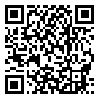Volume 7, Issue 2 (8-2020)
J Prevent Med 2020, 7(2): 62-53 |
Back to browse issues page
Download citation:
BibTeX | RIS | EndNote | Medlars | ProCite | Reference Manager | RefWorks
Send citation to:



BibTeX | RIS | EndNote | Medlars | ProCite | Reference Manager | RefWorks
Send citation to:
Nasiri Z, Maraghi E, Rasaa S F, Jahanaifard E, Nabgan S, Eydakzadeh Z. Knowledge, attitude, and practice of female students of Ahvaz Jundishapur University of Medical Sciences about cutaneous Leishmaniasis. J Prevent Med 2020; 7 (2) :62-53
URL: http://jpm.hums.ac.ir/article-1-420-en.html
URL: http://jpm.hums.ac.ir/article-1-420-en.html
Zahra Nasiri1 

 , Elham Maraghi2
, Elham Maraghi2 
 , Syadeh Fatemeh Rasaa1
, Syadeh Fatemeh Rasaa1 
 , Elham Jahanaifard *3
, Elham Jahanaifard *3 

 , Shaghayegh Nabgan1
, Shaghayegh Nabgan1 
 , Zaynab Eydakzadeh1
, Zaynab Eydakzadeh1 



 , Elham Maraghi2
, Elham Maraghi2 
 , Syadeh Fatemeh Rasaa1
, Syadeh Fatemeh Rasaa1 
 , Elham Jahanaifard *3
, Elham Jahanaifard *3 

 , Shaghayegh Nabgan1
, Shaghayegh Nabgan1 
 , Zaynab Eydakzadeh1
, Zaynab Eydakzadeh1 

1- Department of Biology and Disease Control, Student Research Committee, Ahvaz Jundishapur University of Medical Sciences, Ahvaz, Iran.
2- Department of Statistics and Epidemiology, School of Health, Ahvaz Jundishapur University of Medical Sciences, Ahvaz, Iran.
3- PhD, Medical Entomology, Department of Medical Entomology, School Of Public Health, Ahvaz Jundishapur University of Medical Sciences, Ahvaz, Iran.
2- Department of Statistics and Epidemiology, School of Health, Ahvaz Jundishapur University of Medical Sciences, Ahvaz, Iran.
3- PhD, Medical Entomology, Department of Medical Entomology, School Of Public Health, Ahvaz Jundishapur University of Medical Sciences, Ahvaz, Iran.
Abstract: (4312 Views)
Introduction: Leishmaniasis is a common parasitic disease in tropical and subtropical regions of the world and is also one of the major health problems in Iran.This study was designed to assess the knowledge, attitude, and practice of female students of Ahvaz Jundishapur University of Medical Sciences about cutaneous leishmaniasis.
Methods: The data collection tool of this cross-sectional study was a researcher-made questionnaire with 28 questions in 4 parts (demographics, knowledge, attitude, and practice). After evaluating the validity and reliability of the questionnaire, it was completed by 384 female students of Ahvaz Jundishapur University of Medical Sciences who were selected by stratified sampling method. SPSS software and Spearman correlation coefficient and Chi-square tests were used to analyze the data.
Results: The highest level of knowledge was related to the the medical school students. A significant relationship was observed between the level of study and type of faculty with students' knowledge (P-value˂0.0001). The best attitude was for BS students. Significant correlation was observed between the level of education and the attitude towards cutaneous leishmaniasis (P-value= 0.019). Students of medical and health schools had good practice in dealing with the disease.
Conclusion: In general, due to the relatively poor knowledge, attitude, and practice of the students, who are the first level of service givers to the the society, it is essential to educate them about the cutaneous leishmaniasis.
Methods: The data collection tool of this cross-sectional study was a researcher-made questionnaire with 28 questions in 4 parts (demographics, knowledge, attitude, and practice). After evaluating the validity and reliability of the questionnaire, it was completed by 384 female students of Ahvaz Jundishapur University of Medical Sciences who were selected by stratified sampling method. SPSS software and Spearman correlation coefficient and Chi-square tests were used to analyze the data.
Results: The highest level of knowledge was related to the the medical school students. A significant relationship was observed between the level of study and type of faculty with students' knowledge (P-value˂0.0001). The best attitude was for BS students. Significant correlation was observed between the level of education and the attitude towards cutaneous leishmaniasis (P-value= 0.019). Students of medical and health schools had good practice in dealing with the disease.
Conclusion: In general, due to the relatively poor knowledge, attitude, and practice of the students, who are the first level of service givers to the the society, it is essential to educate them about the cutaneous leishmaniasis.
Type of Study: Orginal |
Subject:
Special
Received: 2020/07/31 | Accepted: 2020/12/21 | Published: 2020/12/21
Received: 2020/07/31 | Accepted: 2020/12/21 | Published: 2020/12/21
Send email to the article author
| Rights and permissions | |
 |
This work is licensed under a Creative Commons Attribution-NonCommercial 4.0 International License. |




 hums.ac.ir
hums.ac.ir